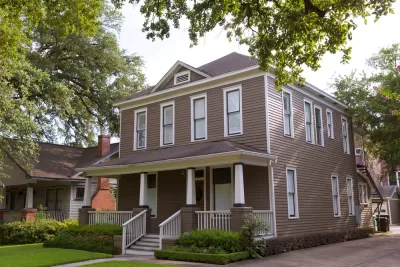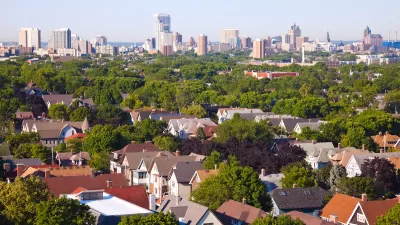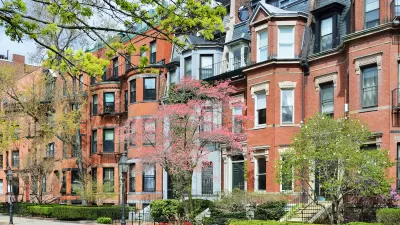By designating that "family" refer to a specific set of ties, many zoning codes make it difficult for "functional" families without those ties to find a place to live.

"Today, when courts ask 'what makes a family?' they often look beyond blood, marriage, and adoption to see if people have made other meaningful, familial commitments that qualify for the obligations and benefits that family law provides," writes Kate Redburn. In many cases of family law, cohabitation can be an important part, "if not the determining factor," in deciding whether a given group of people constitutes a family.
Redburn argues that many local zoning provisions discriminate against "functional" families in favor of "formal" ones by setting strict limits on the number of "unrelated" people who can co-habitate in certain kinds of housing.
The 1974 Supreme Court case Village of Belle Terre v. Boraas gave the nod to that practice by ruling that municipalities can differentiate between related and unrelated families. But Redburn traces the origins of the problem to the mid-1960s, when "fears of the family in crisis" led more localities to zone in favor of formal nuclear families. That practice coincided in many cases with formalized neighborhood segregation and the growing preponderance of single-family zoning.
"By uncoupling the definition of family from residential limits, all kinds of chosen families—foster families, communes, students, seniors, and group homes—would be able to live together legally," Redburn writes.
FULL STORY: Why Are Zoning Laws Defining What Constitutes a Family?

Planetizen Federal Action Tracker
A weekly monitor of how Trump’s orders and actions are impacting planners and planning in America.

Maui's Vacation Rental Debate Turns Ugly
Verbal attacks, misinformation campaigns and fistfights plague a high-stakes debate to convert thousands of vacation rentals into long-term housing.

San Francisco Suspends Traffic Calming Amidst Record Deaths
Citing “a challenging fiscal landscape,” the city will cease the program on the heels of 42 traffic deaths, including 24 pedestrians.

Defunct Pittsburgh Power Plant to Become Residential Tower
A decommissioned steam heat plant will be redeveloped into almost 100 affordable housing units.

Trump Prompts Restructuring of Transportation Research Board in “Unprecedented Overreach”
The TRB has eliminated more than half of its committees including those focused on climate, equity, and cities.

Amtrak Rolls Out New Orleans to Alabama “Mardi Gras” Train
The new service will operate morning and evening departures between Mobile and New Orleans.
Urban Design for Planners 1: Software Tools
This six-course series explores essential urban design concepts using open source software and equips planners with the tools they need to participate fully in the urban design process.
Planning for Universal Design
Learn the tools for implementing Universal Design in planning regulations.
Heyer Gruel & Associates PA
JM Goldson LLC
Custer County Colorado
City of Camden Redevelopment Agency
City of Astoria
Transportation Research & Education Center (TREC) at Portland State University
Jefferson Parish Government
Camden Redevelopment Agency
City of Claremont





























